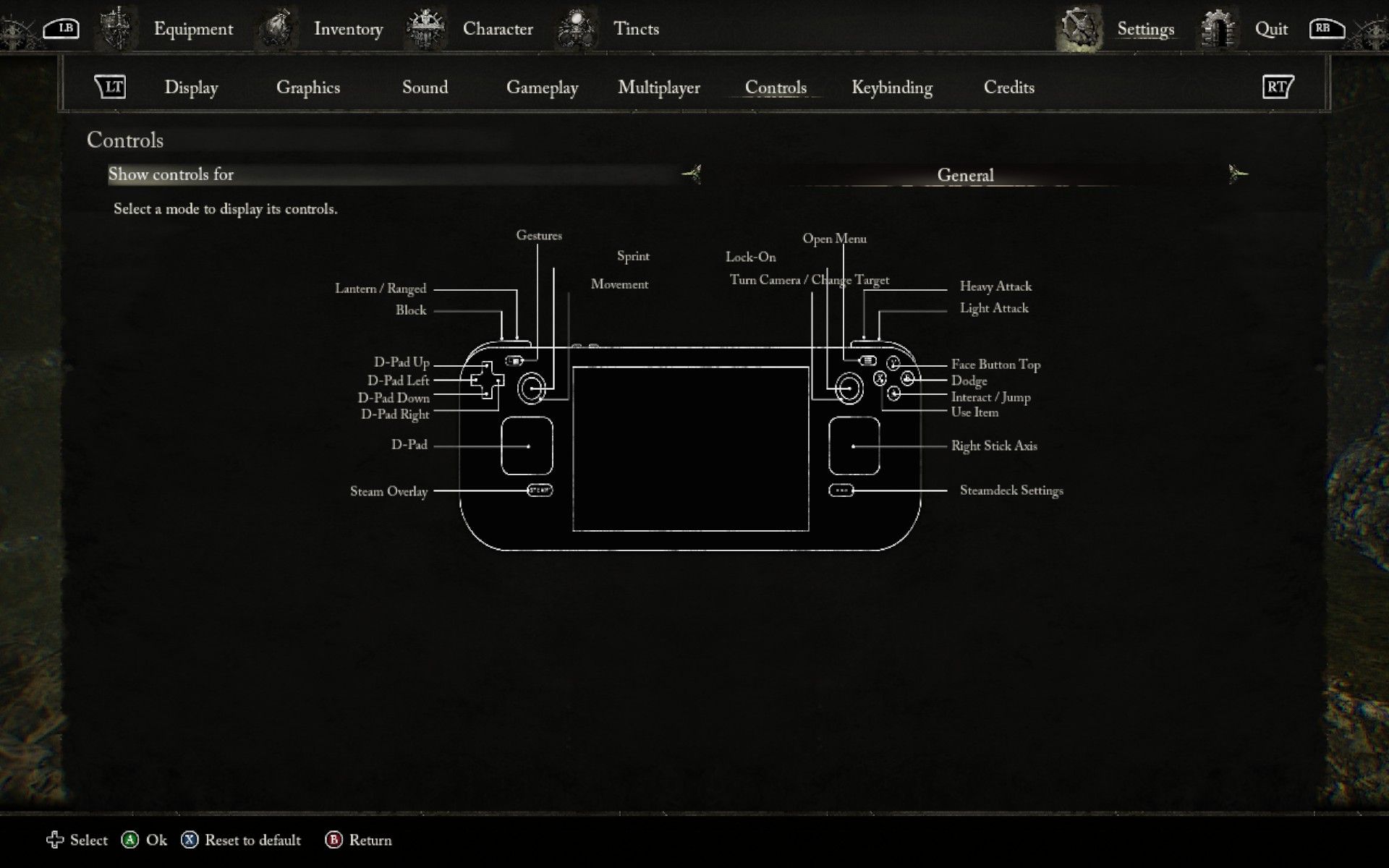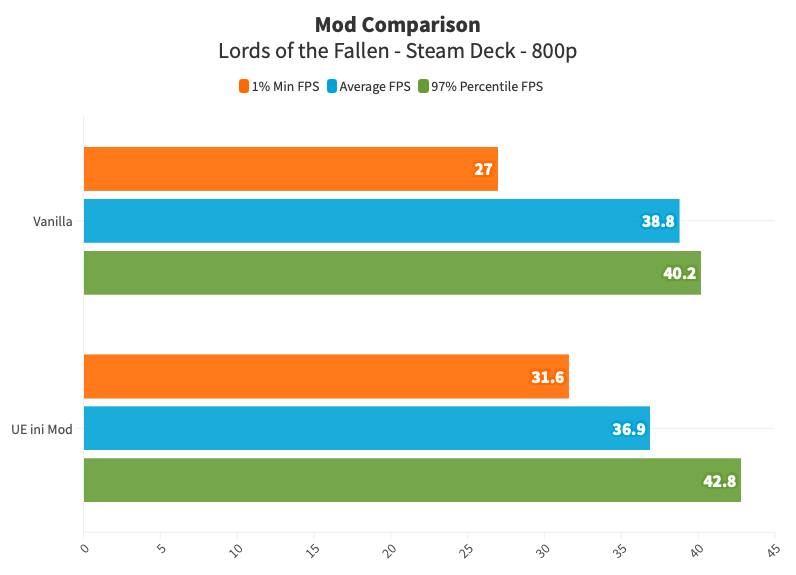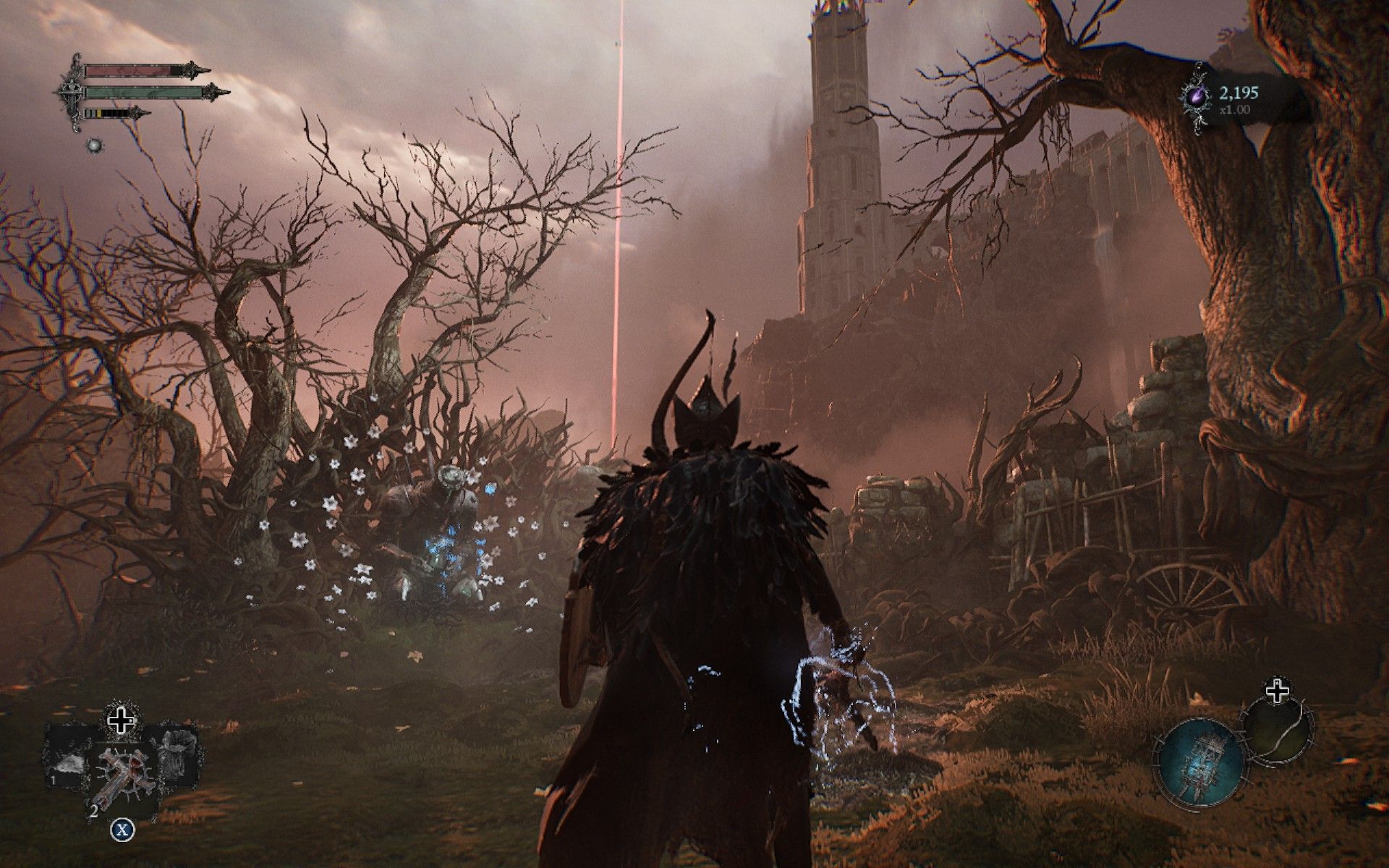How does this demanding Unreal Engine 5 project fare on the Steam Deck? We take a look and share the best settings to get it humming on Valve's portable PC.
Souls-like games are on the rise, and after FromSoftware's 2022 release of Elden Ring, one thing became clear: adding an intriguing open world and a few fresh mechanics to the formula often results in success. Hexwork and CI Games likely had this in mind when they began working on their reboot of a 2014 RPG.
The third-person action-RPG, Lords of the Fallen, features a dark fantasy world named Axiom. It presents an interesting twist: with a mystical lamp, players can cross the dimensional barrier and traverse the interconnected counterpart, Umbral. Imagine exploring every corner of a vast game world in two distinctive versions, each with its own unique secrets and dangers.
Lords of the Fallen (LOTF) is a new Unreal Engine 5 title, thus offering another fascinating opportunity to see how its tech performs on the Steam Deck.
At first glance...
…it seems that CI Games considered the Steam Deck when optimising the final product. It's refreshing to see the Steam Deck not only featured in the game's controls menu, but also apparent that some pre-release benchmarking specifically targeted this device.

For example, on Steam Deck the RPG lacks upscaling options available on PC, which is obviously a double-edged sword. The game includes bespoke tweaks but lacks options to prevent AMD’s FSR (FidelityFX Super Resolution) from kicking in. LOTF uses FSR2 on the Deck, and users have no control over this. This often results in inferior picture quality due to temporal upscaling artefacts around fast-moving and more detailed objects.
Despite these issues, Lords of the Fallen runs surprisingly well on Valve’s handheld without any initial changes. By opting for the defaults — the low stock preset at 'native' resolution and optional GFX features like motion blur and chromatic aberration enabled — players can expect around 30-40 FPS. The most significant FPS drops occur during interactions with ‘cross-dimensional’ features, such as separating enemies from their souls or using the lantern to briefly peek into the Umbral world whilst in Axiom.

So, is there anything we could do to have a more consistent stability and overall visual improvement on Steam Deck? Turns out: There is.
Every frame counts
Since we're discussing a Unreal Engine 5 game, we have access to numerous engine tweaks. Asynchronous rendering and asynchronous loading improve overall stability, while adjustments to the streaming pipeline reduce environmental-related stutters during exploration, to name just a few examples. Thankfully, the community at Nexusmods consistently impresses with their modifications, and it didn’t take long to find a useful mod that includes all these optimizations.
Comparing the new results with the default baseline demonstrates that the effort is worthwhile. This quickly established a new baseline for further testing:

As Nexusmods requires an account to download files, I thought it might be helpful to provide the tweaks separately, saving you the hassle. However, if you have a Nexusmods account, be sure to visit the mod page and support the author’s work!
The process is straightforward: download these .ini files and place them in the following location on your Steam Deck through Desktop Mode:
1501750/pfx/drive_c/users/steamuser/AppData/Local/
LOTF2/Saved/Config/Windows
Interestingly, developer CI Games seems to have overlooked some visual aspects in Lords of the Fallen. For instance, Chromatic Aberration, particularly at 800p, detracts from the game's overall appearance. Conversely, settings like Anti-Aliasing and Post-Processing significantly enhance clarity with minimal impact on the limited rendering budget available on the Steam Deck.

Best Settings for Lords of the Fallen on Steam Deck
After going back and forth to compare each setting and its impact on rendering performance, I've settled on the following configuration, emphasising a visually pleasing and solid 30FPS. These settings should allow you to explore Axiom and Umbral for up to two hours to the fullest.
| Display (in-game) | |
|---|---|
| Resolution | 1280x800 |
| VSync | Off |
| FPS Limit | Unlimited |
| Graphics (in-game) | |
|---|---|
| View Distance | Medium |
| Shadows | Low |
| Anti-Aliasing | High |
| Texture Quality | High |
| Visual Effect Quality | Medium |
| Post-Processing Quality | High |
| Reflection Quality | Medium |
| Global Illumination Quality | Low |
| Foliage Quality | Off |
| Motion Blur | On |
| Film Grain | Off |
| Chromatic Aberration | Off |
| Umbral Distortion Effect | On |
| Quick Action Menu | |
|---|---|
| Use per-game profile | On |
| Frame Limit | 30FPS (60/90Hz) |
| Disable Frame Limit | Off |
| Allow Tearing | Off |
I'm still keen to find out if there's a way to disable FSR on the Steam Deck. I’ve reached out to CI Games and Hexwork to inquire about possible options. Disabling it could reduce CPU load, potentially allowing us to play Lords of the Fallen at 40, or even up to 45FPS. This would be particularly beneficial on the new 90Hz panel of the Steam Deck OLED — where I tested the game.
Lords of the Fallen still looks amazing and should run just fine with these tweaks applied. That being said, you might still experience some stuttering every now and then — because it’s a demanding Unreal Engine 5 project after all. But even being able to run this on a handheld is an experience to behold in its own right.




